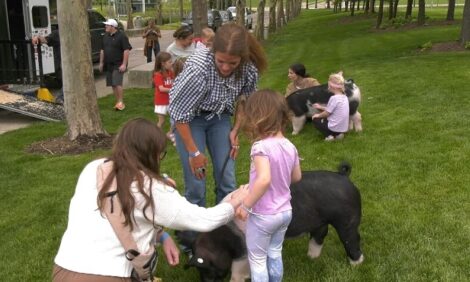



Tools to Contain PRRS Applicable to Other Diseases
CANADA - A Minnesota-based swine veterinarian says new tools developed to contain the spread of Porcine Reproductive and Respiratory Syndrome can be used to protect swine from other diseases, according to Bruce Cochrane. Porcine Reproductive and Respiratory Syndrome is a viral disease that causes reproductive problems in sows, including abortions, weak born piglets and high mortality and it has a respiratory component in which pigs are susceptible to respiratory disease from the virus itself as well as other bacterial and viral pathogens.
Dr Scott Dee, with the Swine Disease Eradication Centre at the University of Minnesota, says new tools including sampling oral fluids to determine a herd's PRRS status, the use of GIS to track disease outbreaks and the use of air filtration have proved highly effective in controlling PRRS.
Dr Scott Dee-University of Minnesota
The virus is spread by what we call direct routes first of all which are infected pigs and contaminated semen but it can also spread by what we call indirect routes and those are non-pig routes.
Those are airborne for example.
Certain strains of the virus can go airborne.
We've shown up to 9.1 kilometers of airborne spread in our studies.
The virus can be moved around by dirty boots and coveralls, by dirty trailers, insects can carry the virus over short distances and people can have the virus on their hands, only on their hands or their boots and coveralls after they've been in an infected pen of pigs.
People can not carry the virus in their upper respiratory tract but without a proper hand washing or change of cloths and footwear you could potentially move the virus that way too.
So in general it can be spread by a number of different ways both direct and indirect.
Dr Dee says techniques for controlling PRRS may be applied to other diseases.
He notes air filtration technology developed for PRRS is applicable to other airborne diseases such as mycoplasma and most likely will be applicable to agents that cause influenza.
Further Reading
|
| - | Find out more information on PRRS by clicking here. |






